Bajra or pearl millet is a widely cultivated millet that is a staple in many traditional cuisines worldwide, especially in arid and semiarid regions. Hand-rolled flat bread (roti) is a regional staple made from Bajra, which has been used for hundreds of years in western India. Rural and impoverished individuals frequently consume this cereal grain as a roti staple food. Throughout the world, Bajras are consumed in varying amounts as food, with Western Africa having the highest consumption.
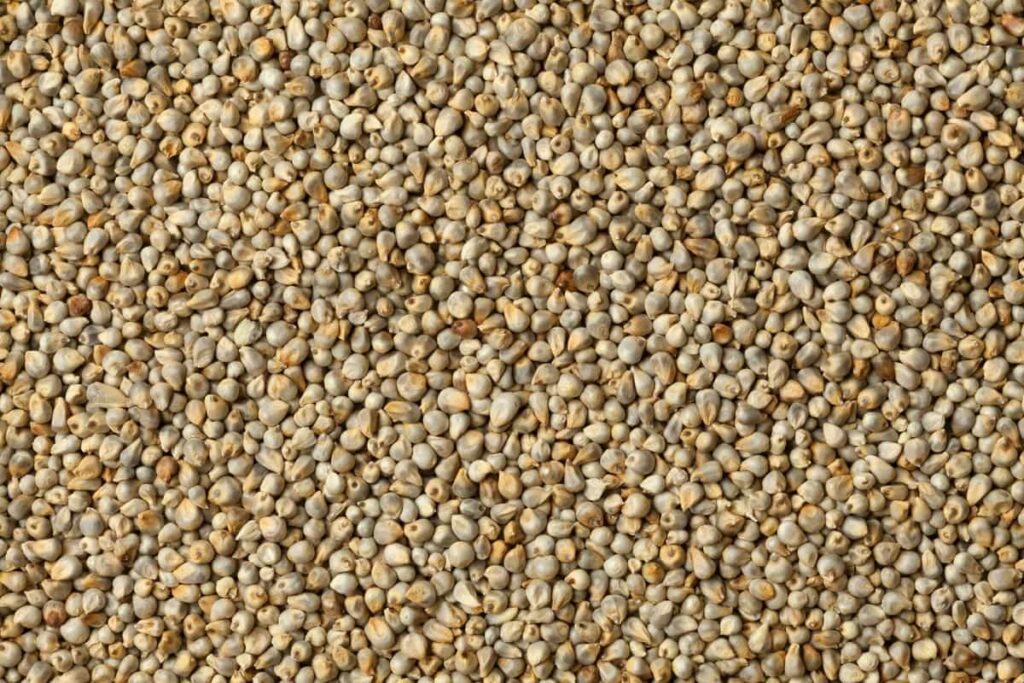
It can tolerate drought, which is why it is well adopted in a region of scanty rainfall. India is the largest producer of Bajra. Along with human consumption, it is used for fodder; its stalk feeds animals. Major Pearl millet growing areas in India are Punjab, Rajasthan, Maharashtra, Gujarat, UP, Haryana, MP, Karnataka, A.P., and Tamil Nadu.
Growing Pearl millet/Bajra organically in Rajasthan
How does the Rajasthan government support organic farming
Two schemes are being implemented to encourage farmers’ organic production in the state. One of these schemes is a centrally sponsored scheme named Paramparagat Krishi Vikas Yojana (PKVY). It was operated from the year 2015 to 16. There is another state-sponsored scheme named Zero Budget Natural Farming Scheme. It is being operated from the state head from 2019 to 20.
Under this, farmers are given various biological activities such as – the organic transformation of land, construction of traditional organic input units, cropping method and organic seed, construction of vermicompost unit, biofertilizer/biopesticide/waste decomposer, phosphate-rich organic manure (PRAM), farmer. In addition, there is a provision to provide grants or assistance of Rs 5000/- per acre in the first year, Rs 4000/- per acre in the second year, and Rs 4000/- in the third year on the implementation of training, etc.
Zero budget natural farming scheme is being operated in the state from the year 2019-20 under the state head, under which information about various activities and techniques of Zero Budget Natural Farming is being made available to the farmers. In addition, orientation workshop and Gram Panchayat level training is organized. Furthermore, there is a provision to provide assistance/grant of 75 percent of the total cost of inputs per farmer or a maximum of Rs. 800/- to the trained farmers to construct organic input units.
Bajra varieties
The improved Bajra RHB-121 variety matures in 75-78 days and is moderately drought-tolerant. In the same way, the hybrid variety RHB-90 ripens within 72-78 days. Likewise, RHB-30 is a hybrid variety of medium height that matures rapidly between 73 and 78 days after planting.
During the 80 to the 85-day growing season, the RHB-58 hybrid variety ripens. Raj-171 variety is grown for dry fodder and grain in areas with normal and scanty rainfall. It ripens within 80 to 85 days. Saline areas can benefit from Raj Bajra chari-2, which ripens in 60 to 70 days and produces grains in 90 to 100 days.
Climate for Bajra cultivation
A dry climate is necessary for the cultivation of Bajra. In contrast, Pearl millet is a fast-growing warm-weather crop that can be grown in rain-fed areas where the annual rainfall ranges from 40 to 65 centimeters. This plant can withstand drought conditions in rainfed areas because of its deeper roots, efficient photosynthetic mechanism, and rapid transfer of food (photosynthates) from leaves to grains.
The best climatic conditions are when the temperature is between 20°C and 30°C, and there are no rains. In Gujarat and Rajasthan, Bajra is cultivated just after the rains or during February and March when there is no rainfall. Irrigated crops are known to have better yields, and rainfed crops don’t tend to do as well. It is a Kharif crop in most parts of the country. July to mid august, when the rains are nearly at their end in the northern region, is preferred for the Bajra crop.
Soil requirements for Bajra cultivation
Various soil types can support pearl millet, but well-drained, non-saline, sandy loams to loamy soils are best. The crop does not tolerate acid soils but performs better on slightly alkaline soils. The soil must be deep and free of stones and concrete. Throughout central and peninsular India is grown on black cotton soils and red and laterite soils. A good yield can be obtained even on poor soils where other crops can’t be grown.
In case you missed it: The Importance of Soil Health in Farming: Role of Soil in Sustainable Agriculture
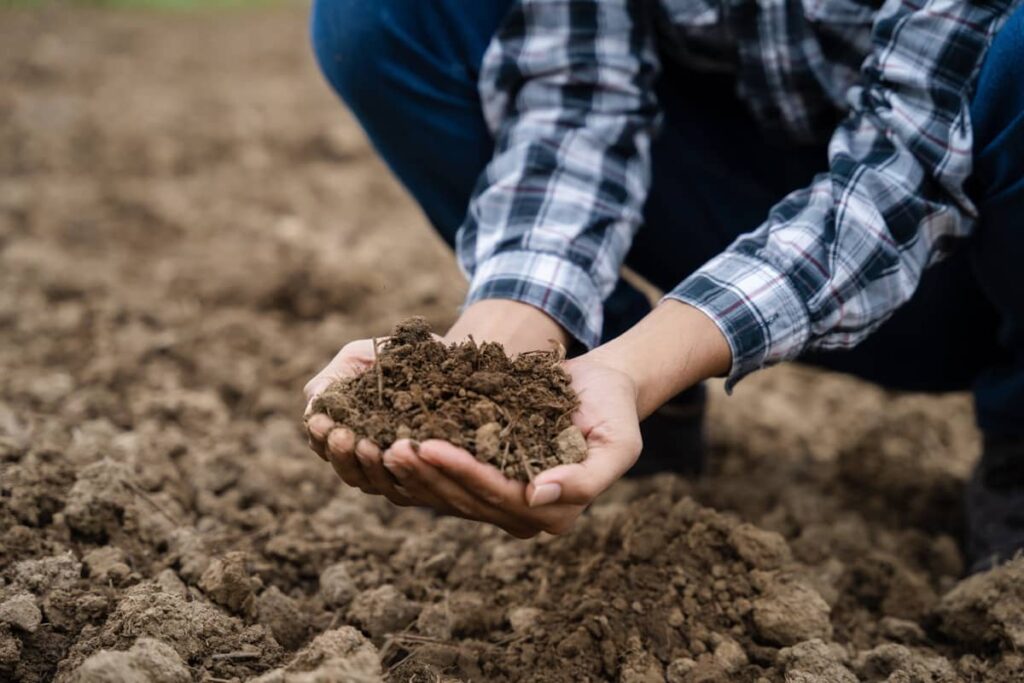
Season to cultivate Bajra
During the monsoon (Kharif) season, pearl millet is primarily grown as a rainfed crop. Irrigation is used only on a very small portion of the crop area. In terms of crop yield, the time of sowing is important since sowing at the right time results in the highest grain yield and net profit.
In the Deccan, it is usually a catch crop when rainfall is insufficient for sowing sorghum. In drylands, therefore, the area fluctuates considerably. Under rainfed conditions, Kharif sowing depends on the onset of the monsoon. Ideally, sowing should occur between mid-June and the first fortnight of July.
Land preparation for Bajra cultivation
After the onset of the monsoon, the field is prepared by summer plowing with a mould board plow, followed by 2-3 harrowings or plowing with a country plow. After the harvest of the previous crop, plowing begins with the first shower of rain. Using a blade harrow to prepare fields in the Deccan black cotton soils is common practice. Keeping weeds down and obtaining good tilth is achieved by working this lengthwise and crosswise. Inefficient seed germination occurs in cloddy or compact seedbed.
In case you missed it: Top 15 Agritech Startups Helping Farmers in India: Smart Farming for High Yields and Low Pests and Disease
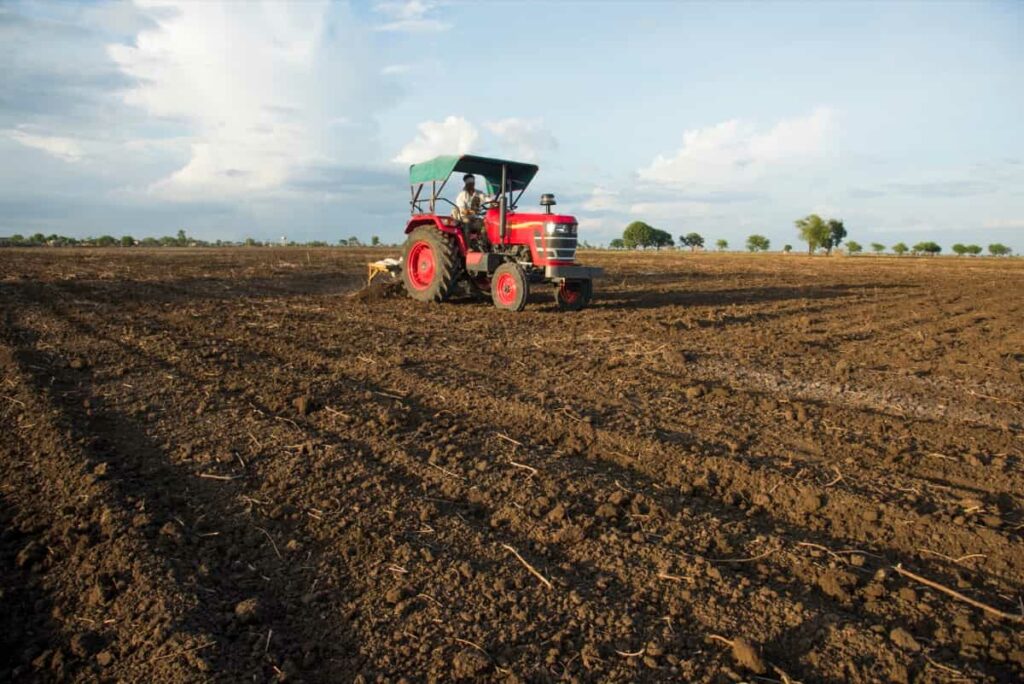
It is, therefore, necessary to break clods after every plowing by planking the field to obtain fine tilth to facilitate sowing and the proper seed distribution at the appropriate depth. Good and fast germination is facilitated by adequate moisture in the seedbed when sowing. Pearl millet yield and soil water-holding capacity were improved by incorporating 10 tons of rice husk or farm yard manure 8 weeks before sowing, a depth of 20-45 cm.
Seed rate and plant population for Bajra cultivation
Sowing two to two and a half kilograms of seed per acre is recommended when using the Kera method (line sowing behind a country plow). Ideally, rows should be spaced 45-50 cm apart, and plants should be spaced 10-12 cm apart. After 20-25 DAS, the spacing between plants is maintained by thinning. Therefore, the ideal plant population ranges from 60,000 to 80,000 per acre. In areas with erratic rainfall, it is recommended to maintain a population of 65,000 plants per acre. For proper germination, seeds should be sown about 2-4 cm deep.
Methods of sowing for Bajra cultivation
A Bajra seed drill is the best method for sowing Bajra. As well as ensuring the best germination, it also ensures a uniform plant population. Intercultural operations with power-driven, bullock or hand-driven implements can be facilitated by line sowing. A drill with hoe-type furrow openers and row press gave a uniform stand and higher yield of pearl millet than a drill with disc-type furrow openers. A flat seedbed is preferred over a ridge and furrow bed on sandy loam soils.
Ridge and furrow systems produce poor plant stands in light soils because crust-prone soil inhibits seed germination. Applying FYM over seed furrows at 4 tons per acre immediately after sowing helps ensure a good plant stand and, consequently, higher yields. A farm yard manure application reduces raindrops’ beating effect. Additionally, it decreases surface drying, keeping the crust strength low so that emerging plumules of the seedling can easily counteract the upward thrust.
Irrigation requirements for Bajra cultivation
Irrigation is important during the initial stage for the plant to grow. Therefore, fortnightly irrigation during the first 2 months is recommended. Irrigation is important immediately after sowing to ensure uniform plant growth and sprouting. Irrigation during the right intervals will provide healthy plant growth. The irrigation schedule may vary depending on the water retention capability of the soil and the overall weather conditions. Irrigation is completely stopped during the last stages when the ears fully mature.
In case you missed it: Beekeeping Business Plan: Bee Farming Cost, Profit, and Project Report in India
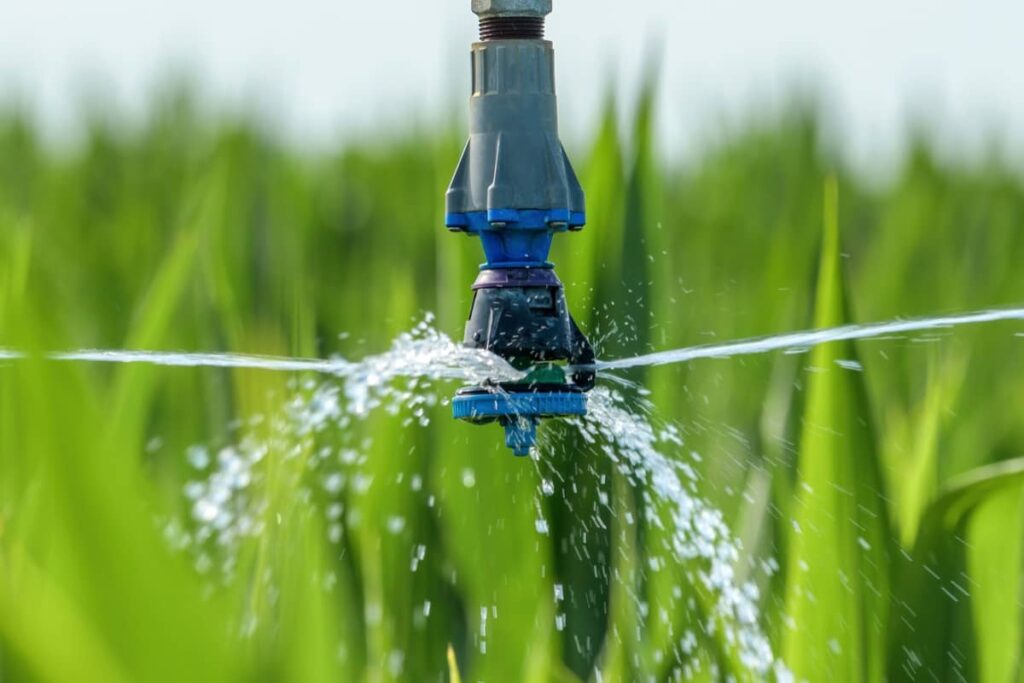
It is important to remember that though Bajra is drought tolerant, they are sensitive when it comes to hybrid varieties. When rainfall fails, about 3-4 irrigations are required. During flowering and grain filling, irrigation is crucial. During normal rainfall distribution, it hardly needs irrigation as a rainfed crop. Water logging is not tolerated by pearl millet. Therefore, rainwater shouldn’t stand in the field for more than a few hours. It is necessary to make proper arrangements for draining the excess water.
Manure application in Bajra cultivation
Often, pearl millet is grown as a rainfed crop without fertilizers. Despite this, fertilizers were well received by improved varieties and hybrids. Crop nutrition requirements vary depending on the variety, soil type, season, and moisture availability. Pearl millet removes a lesser amount of N and P when compared to sorghum and maize but a greater amount of K.
In case you missed it: How to Compost Kitchen Waste with Worms: A Guide to Kitchen Vermiculture
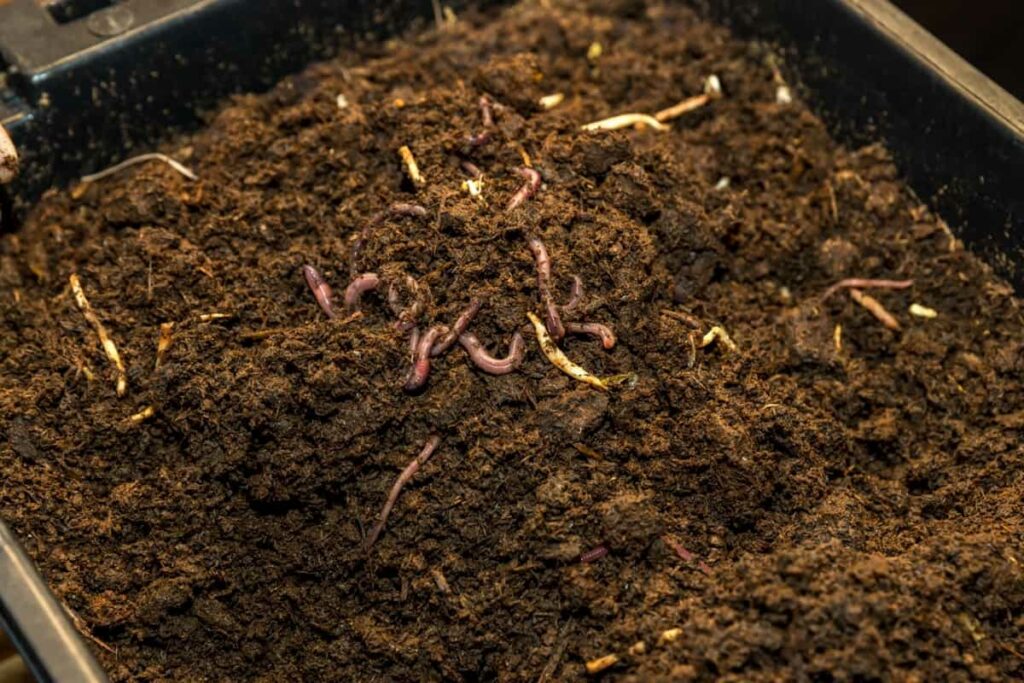
In crop production, nitrogen is a crucial component of chlorophyll and different amino acids. Pearl millet’s yield can be increased by applying N fertilizer to soils deficient in nitrogen. A soil test defines the amount of fertilizer needed for maximum profit. When final land preparation is completed, FYM or compost can be applied at a rate of 3-5 tons/acre to meet the requirements of local varieties of pearl millet and maintain soil moisture.
Weed management of Bajra cultivation
As a rainy-season crop, it suffers heavily from weed infestation. During the 20-35 DAS period, there is severe damage. The competition between weeds and crops can reduce yields by 25-50 percent. It is, therefore, essential to control weeds on time to get higher yields.
Several weeds are important to pearl millet, including Sawan grass, Doob, Motha, Sathi, Kewal, and Makra. Between 20 and 40 DAS (days after sowing), the crop requires 2-3 intercultural operations. Deep hoeing should be avoided near plants to prevent damage to their roots. Intercultural work can be accomplished with a wheel hoe, triphal, or hand hoe.
Pests in Bajra crop and their organic control
Pearl millet white grub
- Damage symptoms: Yellowing and wilting of leaves. Drying of the entire crown. Affected canes come off easily when pulled. Cause extensive damage to roots and base of the shoot.
- Control: Conserve Parasitoids like Typhia (parasitic wasps) and predators like Ground beetle, ant, etc.
Shoot fly
- Damage symptoms: A dead heart condition is caused by larval damage to seedlings within 5 to 30 days of emergence. A late infestation may also cause rotting or drying of the panicle during the formative stage.
- Control: Until the crop is 30 days old, set up low-cost fish meal traps at 4/acre. The removal of seedlings with dead hearts and the maintenance of an optimal plant stand. Stubbles should be removed and destroyed after harvest by plowing.
In case you missed it: How to Start Organic Kodo Millet Cultivation from Scratch: Production and Cultivation Practices for Sowing to Harvesting
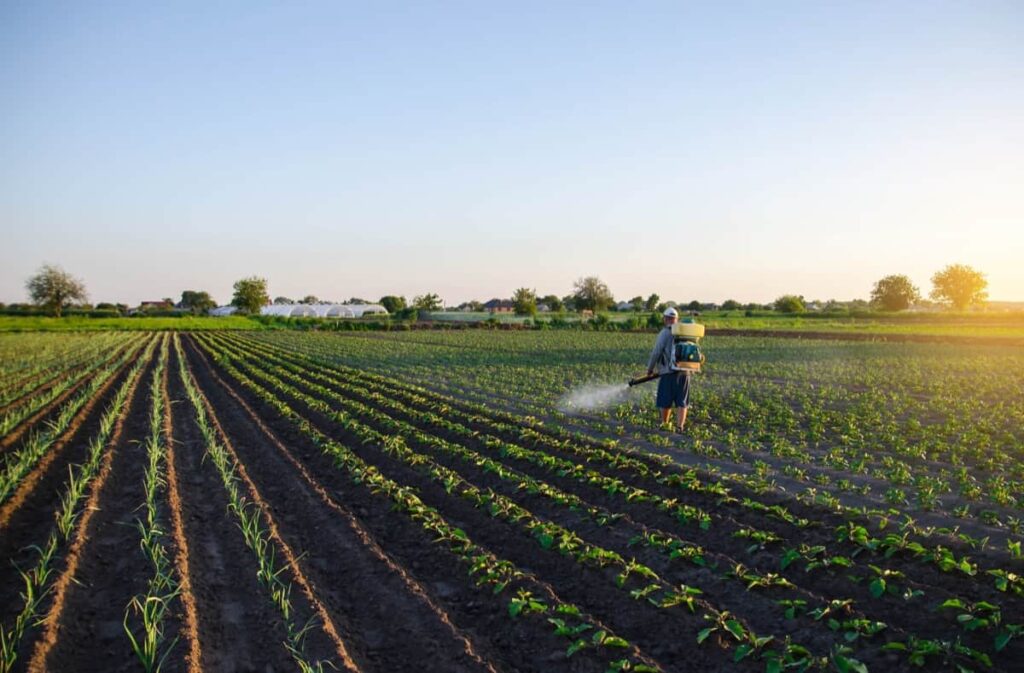
Stem borer
- Damage symptoms: Damage occurs as a series of small holes in lines (pinholes) in younger leaves. Holes in the stem are caused by larvae tunneling into the stem.
- Control: Dead hearts should be pulled out and used as fodder or buried in manure pits. Sow the lab or cowpea as an intercrop (Sorghum: cowpea at 4:1). Set up a light trap and spread bio-control agents viz., Trichogramma minutum, Bracon chinensis, etc.
Diseases in Bajra and their organic control
Downy mildew
- Disease symptoms: The characteristic symptoms are pale, chlorotic, broad streaks extending from the base to the tip of the leaves. The infected plants fail to form ear, but if formed, they are malformed to green leafy structures.
- Control: Roguing and gap filling, deep plowing, and soil solarisation. Avoidance of monoculture. Avoidance of low-lying fields and waterlogging.
Rust
- Disease symptoms: Small reddish-brown to reddish-orange, round to elliptical uredinia develop mainly on foliage. As the severity of the infection increases, leaf tissue will wilt and become necrotic from the leaf apex to the base.
- Control: Fungal species like Azadirachtin 0.15% or Trichoderma viride 3% can be sprayed to control rust disease. Alternatively, Aspergillus globosum, Chaetomium globosum, and Trichoderma koningii can be used.
Harvesting and threshing of Bajra
Because of its tillering habit, Pearl millet’s earhead maturity is not uniform, especially in improved varieties. Grains that are brown and hard, which contain 18-20% moisture, should therefore be harvested when they are brown and hard. The crop is generally harvested in two ways: by cutting the earhead first, then cutting the remaining stalk for fodder, and by cutting the entire plant by sickles and staking it in the sun for 5-6 days.
A tractor separates the grains by trampling under bullocks’ feet or beating the earheads with sticks. During winnowing, the grain is separated from the chaff by blowing away the chaff after threshing. You can also use a winnower to separate the grain from the chaff. It is thoroughly dried in the hot sun by spreading the cleaned grain on a dry floor and stirring it frequently after winnowing.
The yield of the Bajra crop, when grown organically
A well-managed irrigated crop gives about 12-14 quintals (hybrids) and 8-10 quintals (composites) of grain, and 4 tons of Stover/acre, while unirrigated crop yields about 5-6 quintals of grain and 3-3.2 tons of dry Stover/acre. For safe storage, pearl millet grain should be dried to a moisture level of about 12 percent.
Conclusion
The Bajra crop is an annual crop that grows well during the summer and is suitable for double cropping and rotation. In East Asia, common bajra was the first dry grain cultivated due to its drought tolerance, which may have contributed to its spread. Today, Bajra is grown on over 260,000 square kilometers of land worldwide, with 50% of all millets produced from pearl millet.
- Management Pests and Diseases in Your Cotton Field
- Sheep Farming Business Plan for Beginners
- Aquaponic Farming at Home: A Step-By-Step Guide
- Profitable Village Farming Business Ideas in 2024
- High-Yield Aquaculture: Fast-Growing Fish for Farming
- Effective Fish Pond Construction Techniques for Beginners
- Irrigation and Water Management in Pineapple Farming
- Blossom to Harvest: Mastering Flowering and Pollination in Papaya Farming
- Pig Fattening Essentials: From Selection to Sale for Beginners
- Raising Wagyu Cattle: A Complete Guide for Premium Beef Production
- Soil Types and Their Water Holding Capacity
- Optimizing Irrigation Schedules for Coconut Groves for Enhanced Yield
- Espresso Your Garden: Coffee Grounds for Healthier Acid-Loving Plants
- The Best Soil Mix for Snake Plants: How to Mix Your Own Snake Plant Soil
- Green Thumb Success: Expert Tips for Cultivating Greenhouse Beans All Year Round
- Bloom All Year Round: The Ultimate Guide to Indoor Hyacinth Care
- Eco-Friendly Gardening: How to Make Liquid Fertilizer from Kitchen Waste
- Ultimate Guide to Grow Anise in Pots: Explore Seed Propagation to Harvesting
- Guide to Raising Chester White Pigs: Discover Breed Facts to Growth Management
- Mastering the Elegance: The Ultimate Guide to Weeping Cherry Tree Care, Planting, and Maintenance
- Ultimate Guide to Planting Garlic in Grow Bags: Growing Strategies for Beginners
- How to Fix Spider Plant Leaf-Related Problems: Natural and Organic Remedies
- 10 Reasons Why Your Tulsi Plant is Shedding Leaves: Home Remedies and Solutions
- Optimizing Growth and Yield: The Advantages of Palm Bunch Ash Fertilizer
- Utilizing Neem Oil Extract as a Natural Pesticide for Hydrangea
- From Soil to Harvest: Various Ways in Which Farmers Can Use AI Tools
- Steps to Encourage and Induce Citrus Flowers: A Comprehensive Guide
- How to Fix Snake Plant Leaf-Related Issues: Natural and Organic Remedies
- Transform Your Garden into a Fragrant Oasis with Raat Ki Rani (Night Blooming Jasmine)
- Discover the Ideal Chicken Breeds for Philippine Farms
- How to Create a Poultry Egg Farm Business Plan for Profits
- Grow Lemon Cucumbers Like a Pro: Insider Techniques for Bountiful Yields
- Ultimate Guide to Caring for Your Pink Princess Philodendron: Tips for Thriving Variegation
- Areca Nut Profit Per Acre: Calculating Yield and Cost of Cultivation
- How Kaveri Chicken is Becoming a More Profitable Breed in Indian Backyards
- Transform Your Barn: 9 Steps to Convert a Horse Stall into a Chicken Coop
